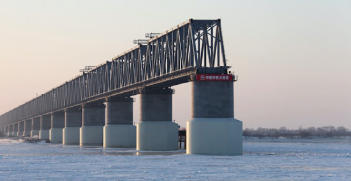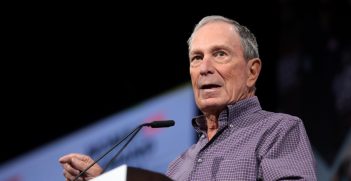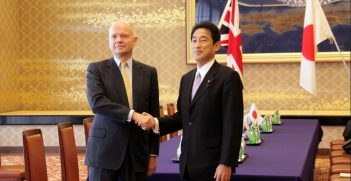A Net Assessment of Iran After Soleimani’s Death

While trying to avoid possible misconceptions and operational biases, what would be the possible actions of Iran in the coming months after President Donald Trump’s high-risk assassination of Soleimani?
Ofira Seliktar’s article for the Besa Center published on 15 January ended with quite a diffult strategic and analytical question: what would be the outcome of a net assessment of both direct and proxy actions performed by the Islamic Revolutionary Guard Corps’ (ICRG) Quds Forces in the near future, after Soleimani’s death?
Many factors and variables have to be considered here. According to Niccolò Machiavelli, “The threat of bloodshed is more dangerous than is the shedding of blood. To threaten to shed blood is, in fact, extremely dangerous: whereas to shed it is attended with no danger at all, for a dead man cannot contemplate vengeance.”
From this perspective, if it is true that Soleimani is no longer an active threat as the principal Iranian mastermind, on the other hand, analysts are expected to address several “puzzles” – questions that may be very difficult to solve because patterns are hard to discern (one is understanding Esamil Qaani future modus operandi, who replaced Soleimani at the command of Quds Force) and even “mysteries” – future events beyond the control of anyone (such as the battle over the successor to Khamenei).
The Hormuz choke point, Israel, and the US
Between unconventional warfare, deception in foreign policy decision-making, human security, public surveillance, energy, and economics, we have to consider a full spectrum of new potential issues in asessing Iran. We must also consider also the significance of the waters around the Strait of Hormuz as a choke point and one of the world’s most important energy corridors. As recalled by the IISS’s (International Institute for Strategic Studies) 2019 edition of Military Balance, a regular navy has limited power-projection capabilities, while the IRGC navy is responsible for maritime security close to home.
But it is also important to avoid possible “blind spots” such as the shia diaspora in South America (seen as externally displaced elements, following the logic that “what happens there matters here”). There is an important historical precedent in this respect: in 1992, Israel’s targeted killing of the then Hezbollah leader Abbas al Musawi was met with retaliation against the Israeli embassy in Buenos Aires, Argentina. The death toll was 30 victims and another 242 injured.
These are difficult questions, but history could tell us something. Going back to 1978, for example, Israeli analysts were able to predict the Iranian Revolution of 1979, unlike their US colleagues. This highlighted the shortfalls of American intelligence operatives in the Middle East at the time.,
However, the United States has since significantly improved the organisational performance of its intelligence, as stated by former NSA and CIA Director, General Michael Hayden in 2016. In 2007, an Iranian Operation Division (IOD) brought together operational, analytical, and technical talent. They synchronised efforts with the different agencies (NSA, FBI, and CIA) resulted in a more focussed effort.
Iran: between capabilites and will
When it comes to weapons systems and capabilities, Iranian has demonstrated their fateh missiles can reach Iraq to demonstrate a “show of force” (as the one which occurred on 8 January 2020), but cannot reach Washington International Airport. According to some experts, only a new US attack on Iranian soil could be countered by Shabab missiles fired in Haifa (Israel) or Dubai (UAE). In other words, given the military performance imbalances between US and Iran and assuming they are both rational actors, we could have soon a “frozen conflict,” going back to the status quo ante. At least this is the argument put forth by the realist school in international relations.
On the other hand, speaking of willingness, British historian Christopher Andrew in his official history of MI5 (Christopher Andrew, The Defense of the Realm, The Authorized History of MI5 (Penguin Book, 2009), pointed out the persistence of Iranian revenge processes. An example is the 1991 killing in Paris –of of Shahpur Bakhitiar, the last Iranian Prime Minister who served under the last Shah of Iran. This assassination took place 12 years after the Shah and his regime were deposed. Bakhitiar was the highest-profile victim of MOIS-VEVAK’s (Iranian intelligence) foreign operations. Possible future scenarios require carefully considering how different strategic cultures work and developing new possible operational codes to address them.
Conclusions
After Soleimani’s killing, we are perhaps entering new, uncharted territory. Furthermore, the new peace plan proposed by US President Donald Trump on 28 January 2020 with Israeli Prime Minister Benjamin Netanyahu could ignite and spark new tensions among some Iranian allies in the area, creating new problems for alliance networks. Or, it could be succesfully managed such that it means long-term peace in the region.
In both scenarios, it will be wise to analyse and monitor events through the prism of local/regional sources, between indications and early warning signals. Persian language statements, news reports, official statements/broadcasts, and other open-source material in other languages produced by Iran or its regional partners in Lebanon, Iraq, or Syria will be of crucial interest. Academic reasearch support can help here for proper and tailored strategic decision-making.
Diego Bolchini is a cultural analyst based in Rome, Italy. Diego reads security studies at Florence University and has been an instructor in security seminars jointly organised by the University of Buckingham (UK) and the GeoLab Laboratory for Geocultural Analyses, Ionian University (Greece).
This article is published under a Creative Commons Licence and may be republished with attribution.





